Best smartwatches for cycling 2025: how to choose the right wearable for your riding and health
The best smartwatches can be used to track all of your exercise and recovery, alongside offering a host of other functions that keep track of your health
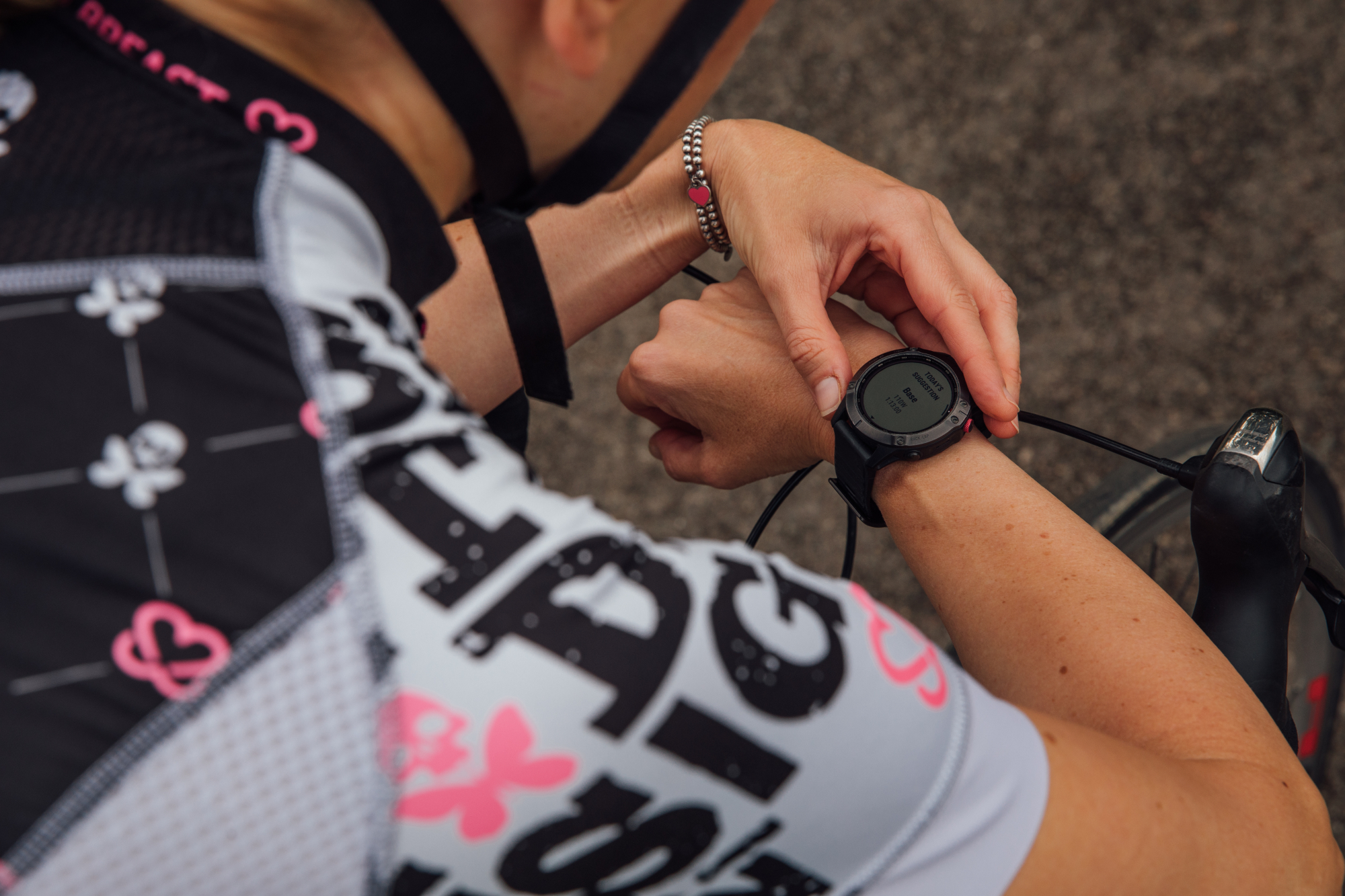

Sonny Evans
The continued evolution of the smartwatch means that, today, they can match many of the features found in the best bike computers. While they may lack the convenience of a head unit when it comes to navigating a route on two wheels, they make up for it with their ability to track and record your activities, record your heart rate, monitor your sleep and suggest recovery times. It’s like having a coach on your wrist.
In a similar fashion to bike computers, the best cycling smartwatch can be paired with training peripherals such as the best power meters and best heart rate monitors, which allows for full data recording and analysis. The decision to opt for a smartwatch over a computer may then come down to whether you want to reap the benefits of 24-hour monitoring or not.
To help you find the right smartwatch, we’ve tested and reviewed a wide range of models, assessing their functionality for cyclists and, in the case of some, for other activities like running and swimming, which are key for Triathletes. We’ve selected our top-rated here across several price points, with top honours going to the Garmin Forerunner 945, for its all-around comprehensive function and value. Given Garmin's market dominance, I would also like to raise awareness of the Coros Pace 3 as a cracking Garmin alternative.
The Quick List

Cheaper than the 955, and with very similar features, the 945 is an excellent watch for cycling, running and many other sports. It is a little smaller than the 955 so may suit smaller wrists better but still offers full connectivity and easy navigation.
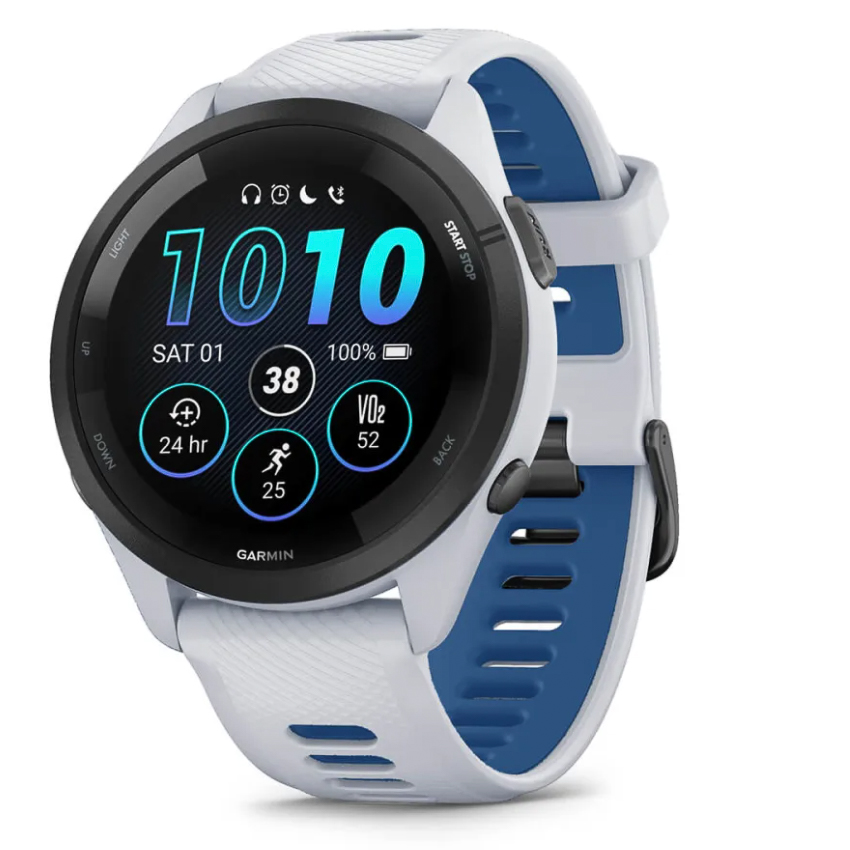
I fell in love with the Forerunner 265 during testing. Its ability to be a great sports watch and everyday watch, combined with its accuracy and the number of functions, is brilliant.
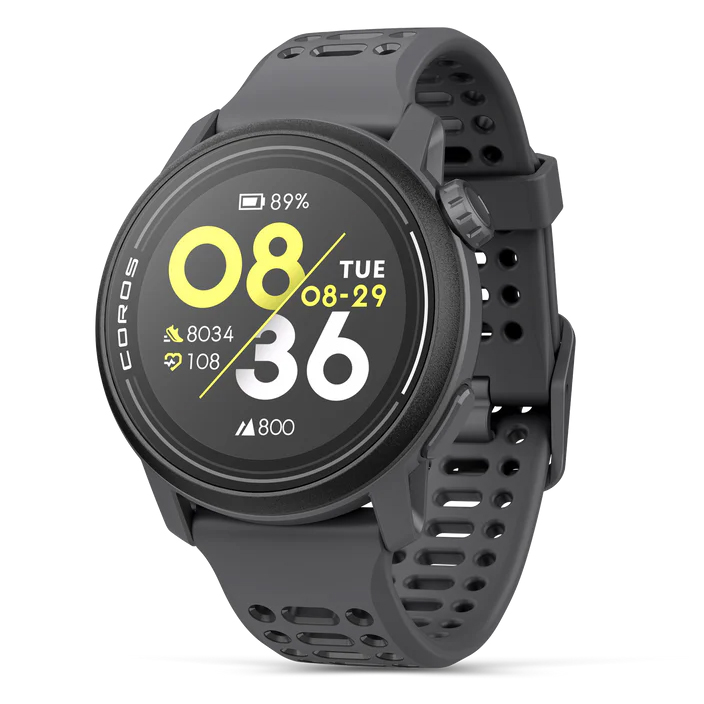
It is hard to compete with a brand as dominant as Garmin. So, Coros haven't, and it has paid off. Their simple user interface, software and functions are child's play compared to some of Garmin's mammoth ecosystem.

Garmin's ultimate Forerunner, the 955, tracks all the metrics you could ever want, on and off the bike. Mapping is clear and easy to navigate by whilst the battery life is excellent even without the potential top-ups from its solar capability.
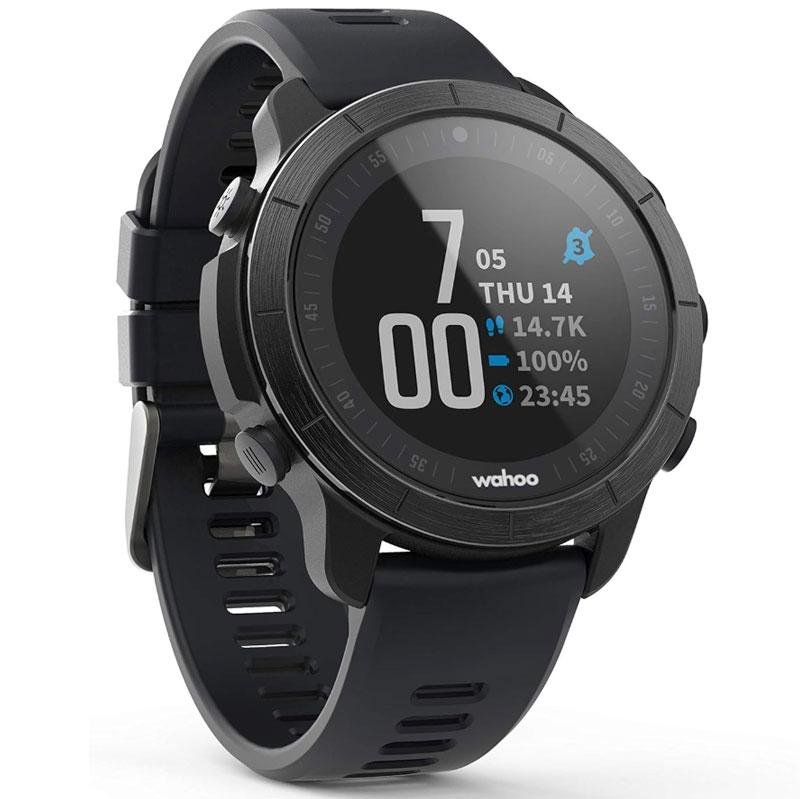
Wahoo's Elemnt Rival offers an excellent in-built HRM, very accurate GPS tracking and outstanding battery life. It does pretty much everything except navigation very well.
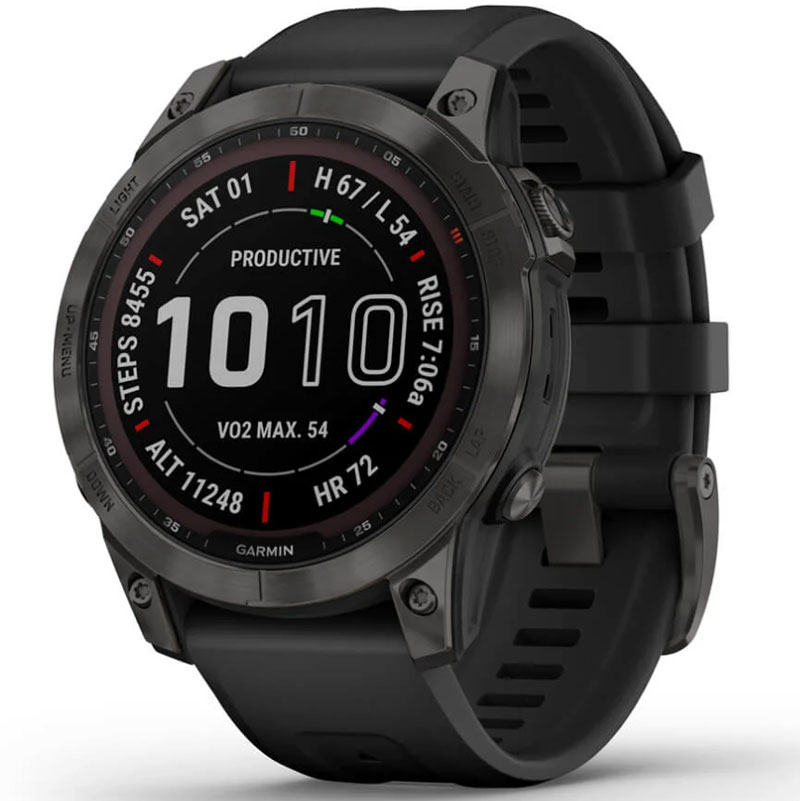
The Fēnix 7 features genuinely impressive battery life, with weeks of charge-free use offering uninterrupted data. The heart rate accuracy proved to be extremely reliable, and overall, this is a fully-loaded functional watch.
Load the next 3 models
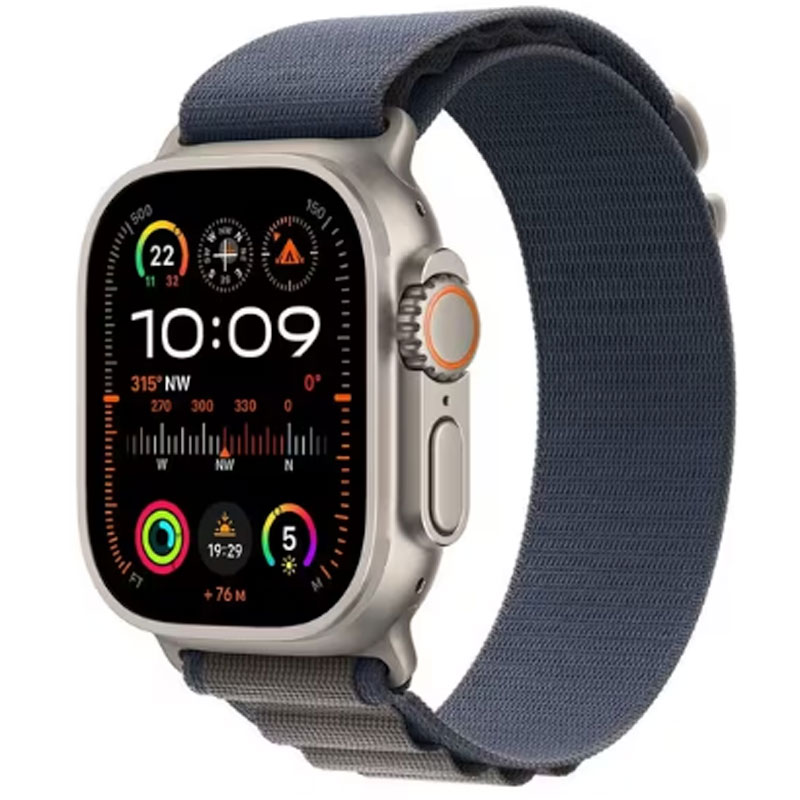
The Ultra 2 is packed with functionality, from connectivity with power meters and heart rate monitors to super accurate GPS and health metrics. You also get seamless integration with Apple’s wider ecosystem.
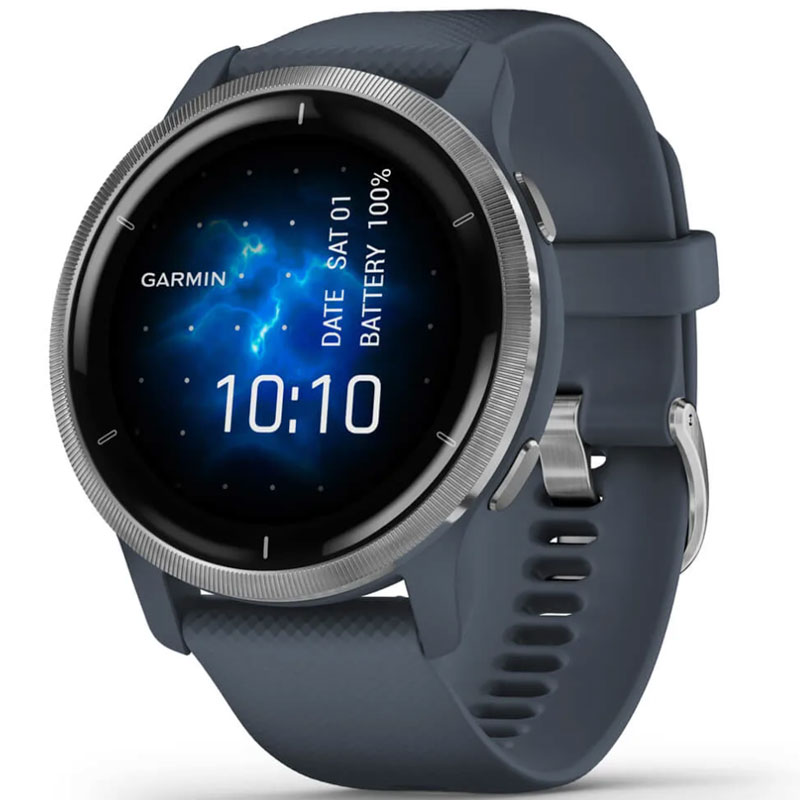
The touchscreen Venu 2 can also be controlled via voice commands, although perhaps not easily when riding at speed. It can be paired with the usual cycling peripherals and Garmin's app for extra data and functionality.
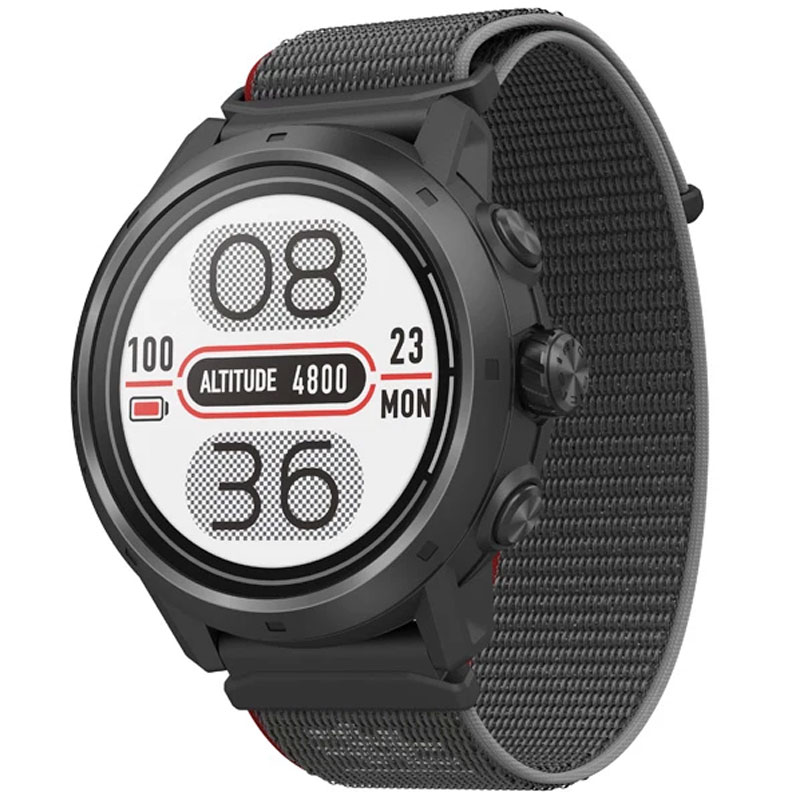
Outstanding battery life and an extremely accurate heart rate measuring system make the Apex 2 Pro a good option for multi-day endeavours and precise data tracking. It is a little bulkier than some watches and looks a bit basic, though.
Best smartwatches for cycling
Best overall cycling smartwatch
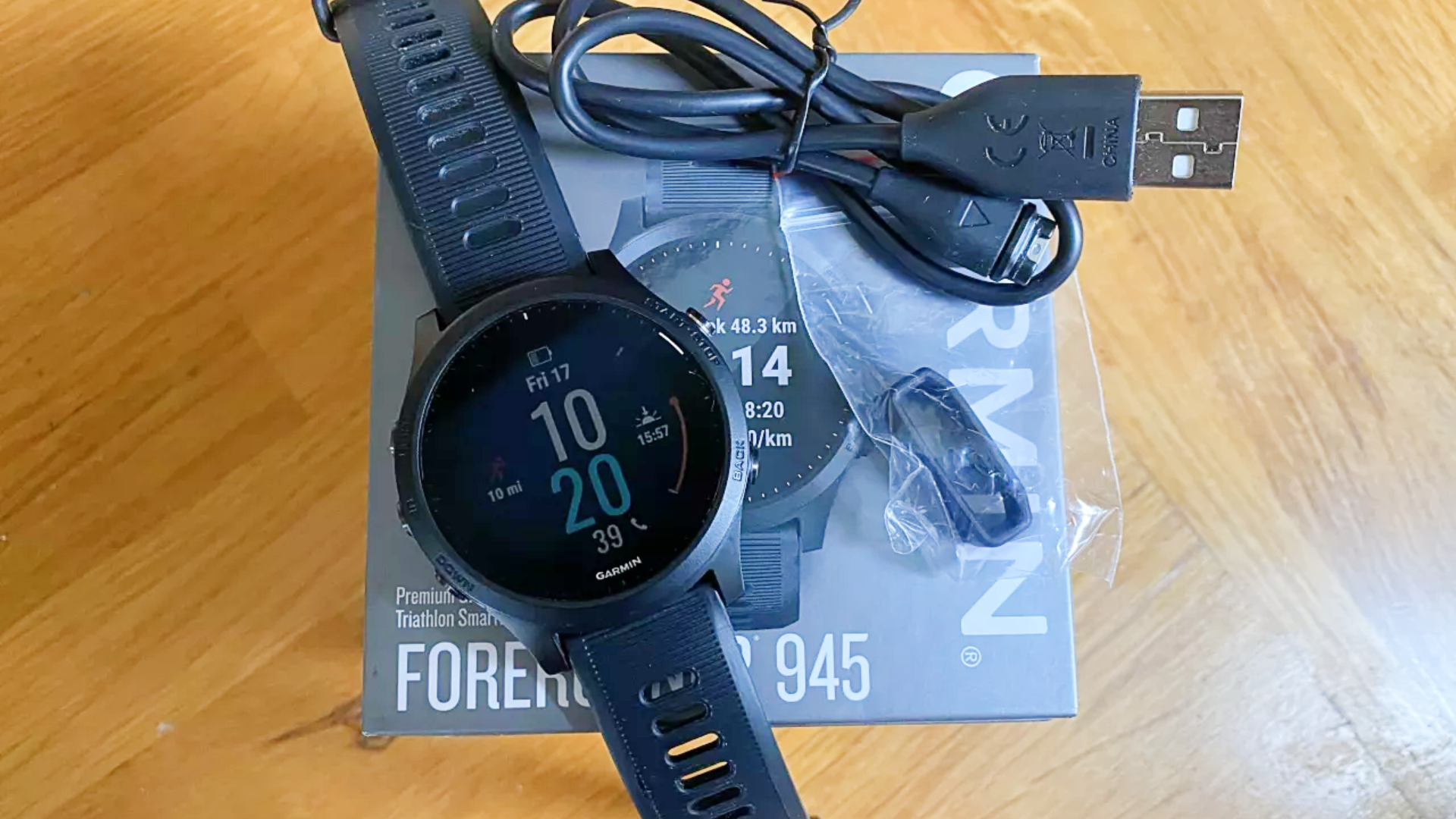
Specifications
Reasons to buy
Reasons to avoid
The 945 was top of the Garmin Forerunner range until the 955 was introduced, but it is still a very worthy choice. It has a huge array of features so that you can track pretty much any sport. As for its cycling-specific functions, we paired it with peripheral sensors via Bluetooth or ANT+, it has sophisticated navigation with turn-by-turn directions and full-color mapping and you can sync your music from select streaming services. We also paid for our post-ride coffee without digging out our wallet or smartphone by using its contactless Garmin Pay.
Sync to Garmin Connect for in-depth tracking of your training, sleep, and general life, and if you want feedback and guidance for future workouts it includes adaptive training plans. Many users in colder climes will probably welcome the lack of a touchscreen, as buttons are easier to use when wearing gloves.
It’s cheaper than the Fenix 7 and the Enduro and is less rugged, but functionality isn’t far behind for a much lower price.
- Read our full Garmin Forerunner 945 smartwatch review
Best value smartwatch for cycling
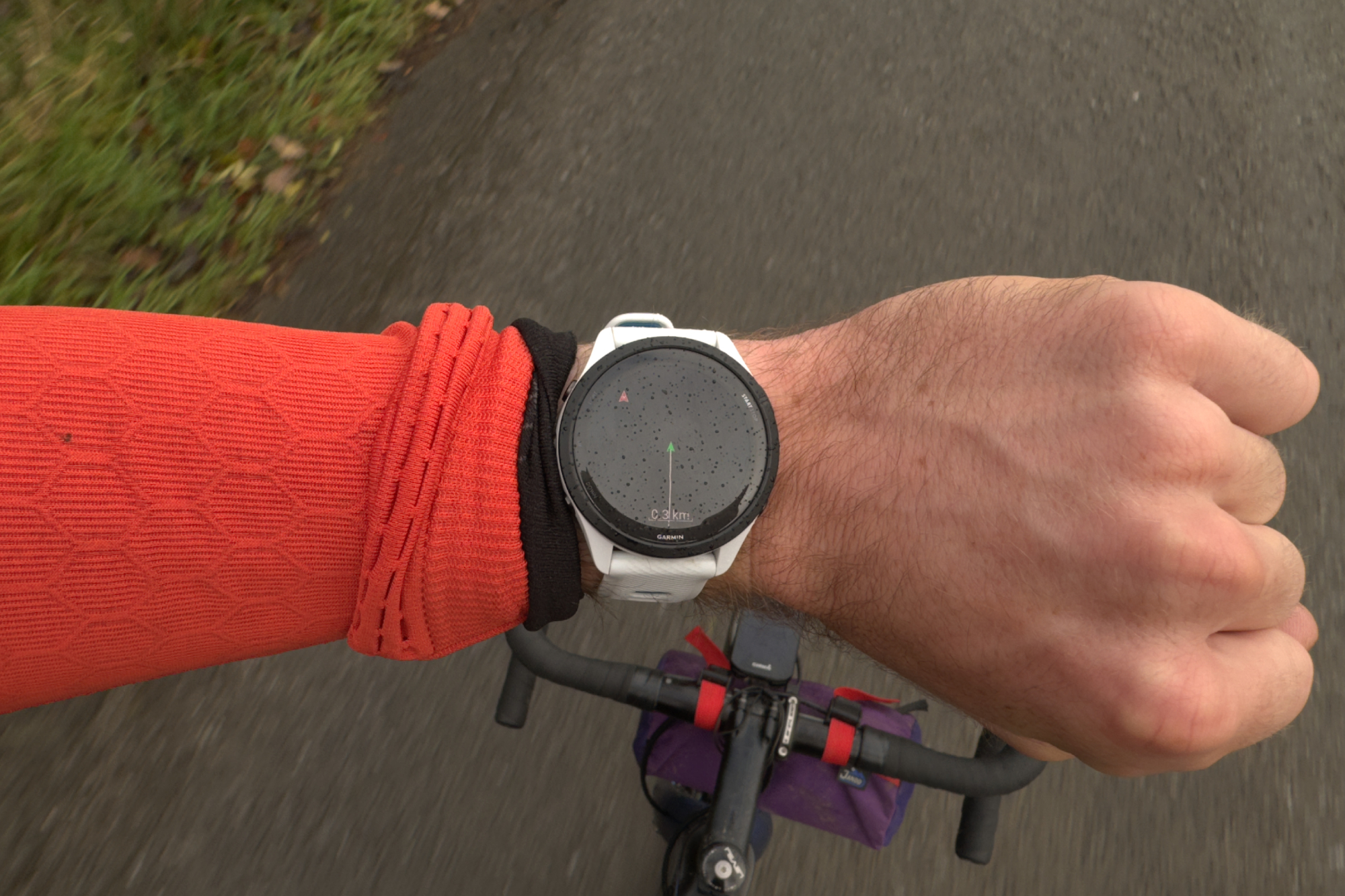
Specifications
Reasons to buy
Reasons to avoid
The Forerunner 265 left me nothing short of impressed. A significant aspect of this is the extensive support of the Garmin ecosystem and the software functions available on many of their devices. and smartwatches.
What sets the 265 apart in the range is its ability to live with it every day as just a smartwatch, rather than a more complicated and complete sports watch. It strikes a better balance than other Garmin models in this range, and while it overlaps with watches from Apple, it remains more sports-oriented if that's your preference.
A significant part of this is in its built-in battery life. Even without Garmin's solar function, it performed much better than other Garmin smartwatches and significantly better than my Apple Watch Series 8 (which will do a day, if you're lucky). The best part is that it will fully charge in under an hour, so you won't be without it for long.
I fell in love with the Forerunner 265; it's so comprehensive that it is hard to see why you'd need anything more. I do wish it had more accurate heart rate monitoring, though. I found myself reaching for my chest monitor to obtain more accurate data. Otherwise, it is an excellent value smartwatch for cyclists and near perfect.
- Read our full Garmin Forerunner 265 smartwatch review
Best Garmin alternative
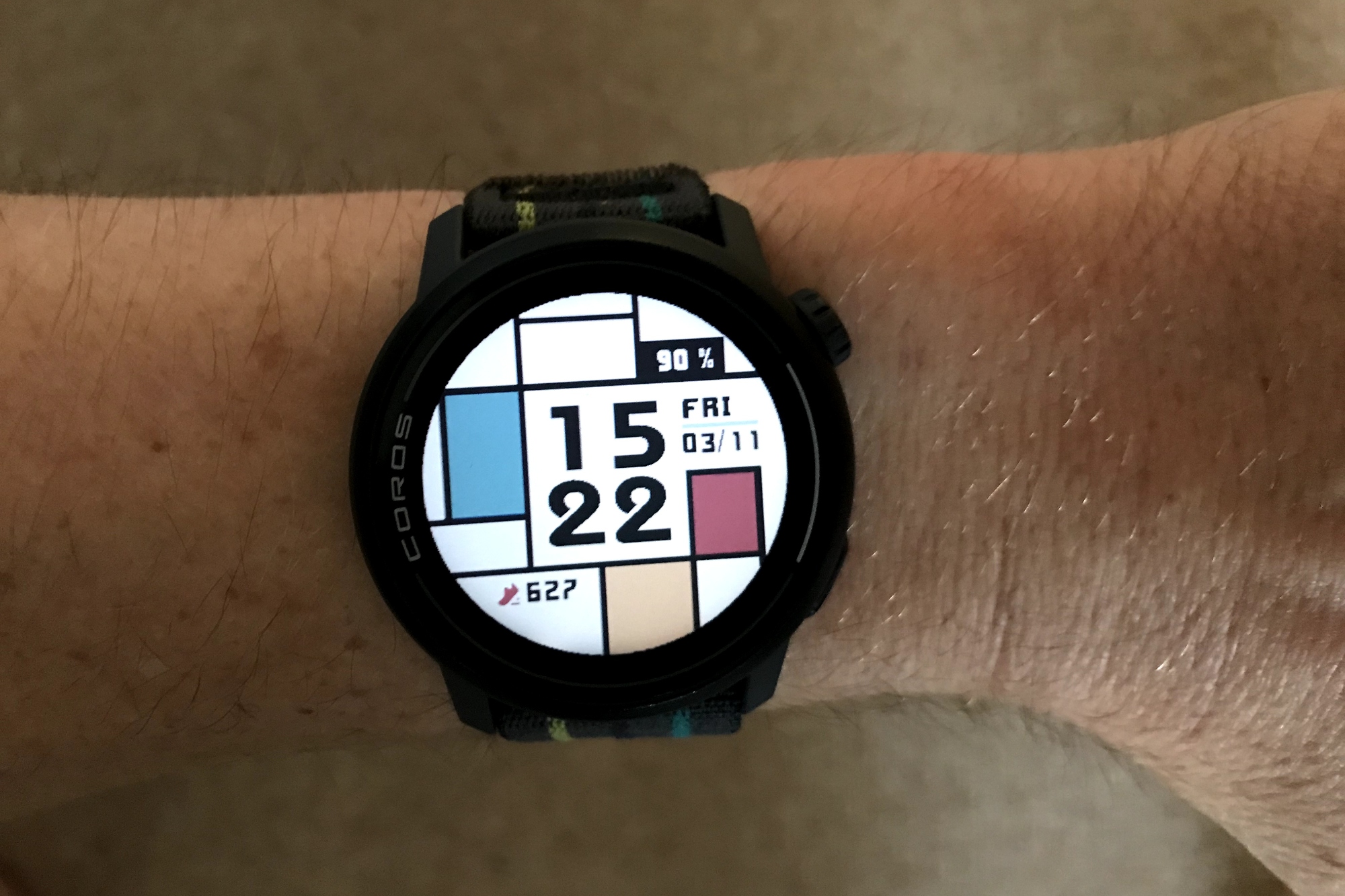
Specifications
Reasons to buy
Reasons to avoid
Unless you are a cyclocross racer, change bikes, or a triathlete, my belief is that a bike computer is likely always to be the better option. Until I tested the Coros Pace 3, which is short, does very well not just being a smart watch ideal for cycling, but at a range of activities.
What immediately stands out is how light and comfortable the Coros is, only 29g with the nylon strap. Its screen is easy to use and read both on and off the bike, although I did need to play around with activity screens and heavily customise them for my needs and sports. For those who aren't a fan of touch screen watches, espcially when on the move, the two-button function is straightforward and intuitive.
Given its big competition is Garmin with their ecosystem that can, if you choose, support all of your Garmin devices, the Coros app again keeps things simple, clean and very usable. The Coros software is significantly faster than Garmin; loading the watch and finding a GPS system is the best experience I've had. This all before we get to the battery life, which Coros have nailed.
Overall, I found the Pace 3 really keeps 'pace' with the Garmin, and it also got me away from my beloved Wahoo Elemnt Rival, which is a similar price but has considerably less function, although it is a few years old now, and due for an update. Overall, Coros has built a very competitive watch, and if people can look past the big 'G', they might realise there is significantly better value to be had.
- Read our full Coros Pace 3 smartwatch review
Best cycling smartwatch for navigation
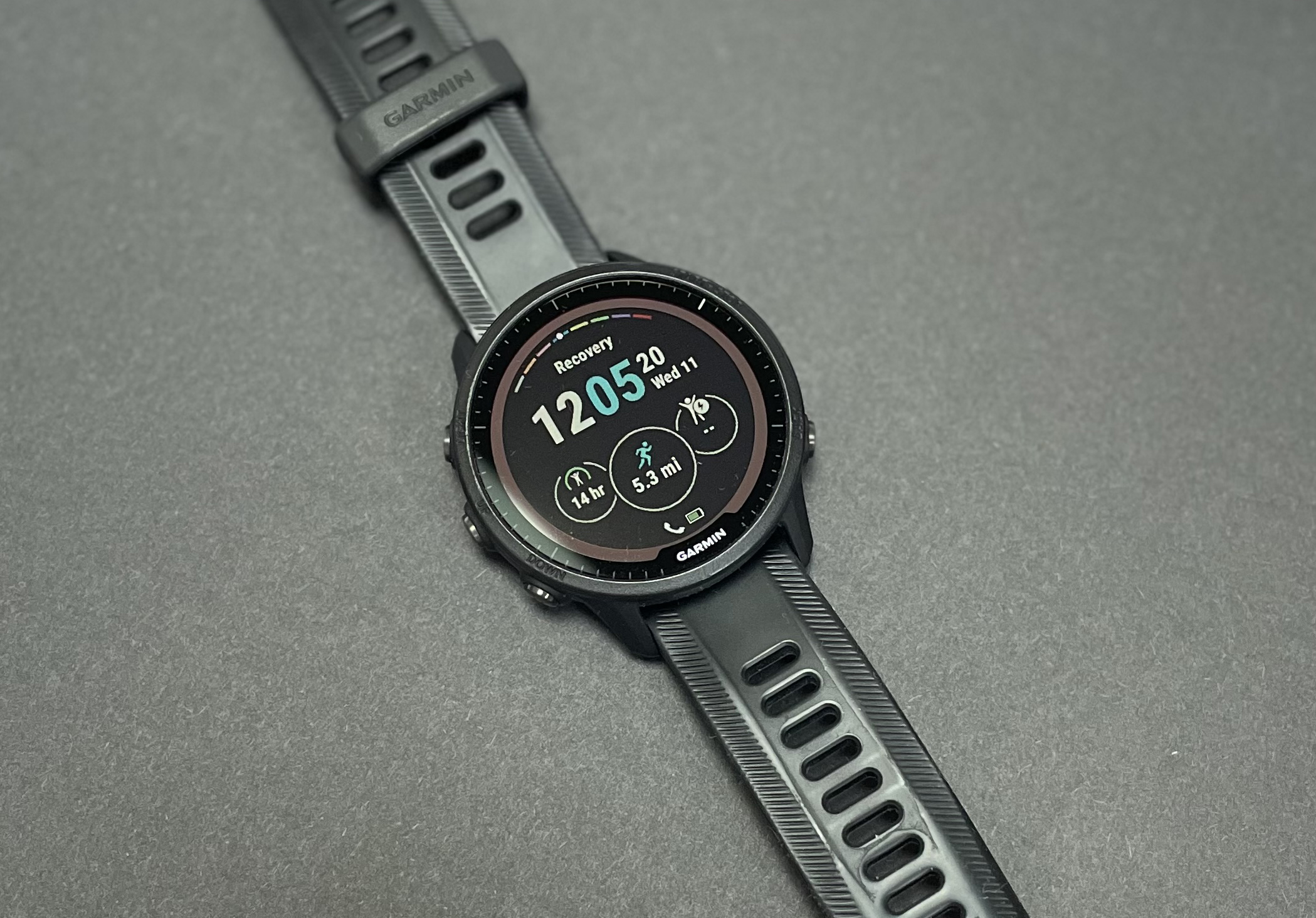
Specifications
Reasons to buy
Reasons to avoid
Garmin’s top-tier Forerunner 955 Solar is packed with features, making it more than just an activity tracker or GPS unit - though it does both of these things well, too.
This watch measures a huge amount of data, providing feedback on your recovery, training readiness, stress levels and more. It does this thanks to two light diodes situated on the back of the watch, which track your heart rate and your heart rate variability. From this, it can measure your performance ability, and then track your progression and recovery accordingly.
As for the mapping, we found that the 33.5mm circumference display made it easy to use and follow. By zooming in the maps clearly showed bridleways as well as splits in the route, certainly making it good enough to navigate by. Even when we tried to get lost, the zoom and scrolling features made it easy to get back on track.
As for battery life, during our four-month test, it was nothing short of exceptional, lasting for over seven days per charge, even through the winter. The solar feature is likely to have a differing appeal based on where you live and how much sunshine you see - the 955 is available without this function.
- Read our full Garmin Forerunner 955 Solar smartwatch review
Best multi sports smartwatch
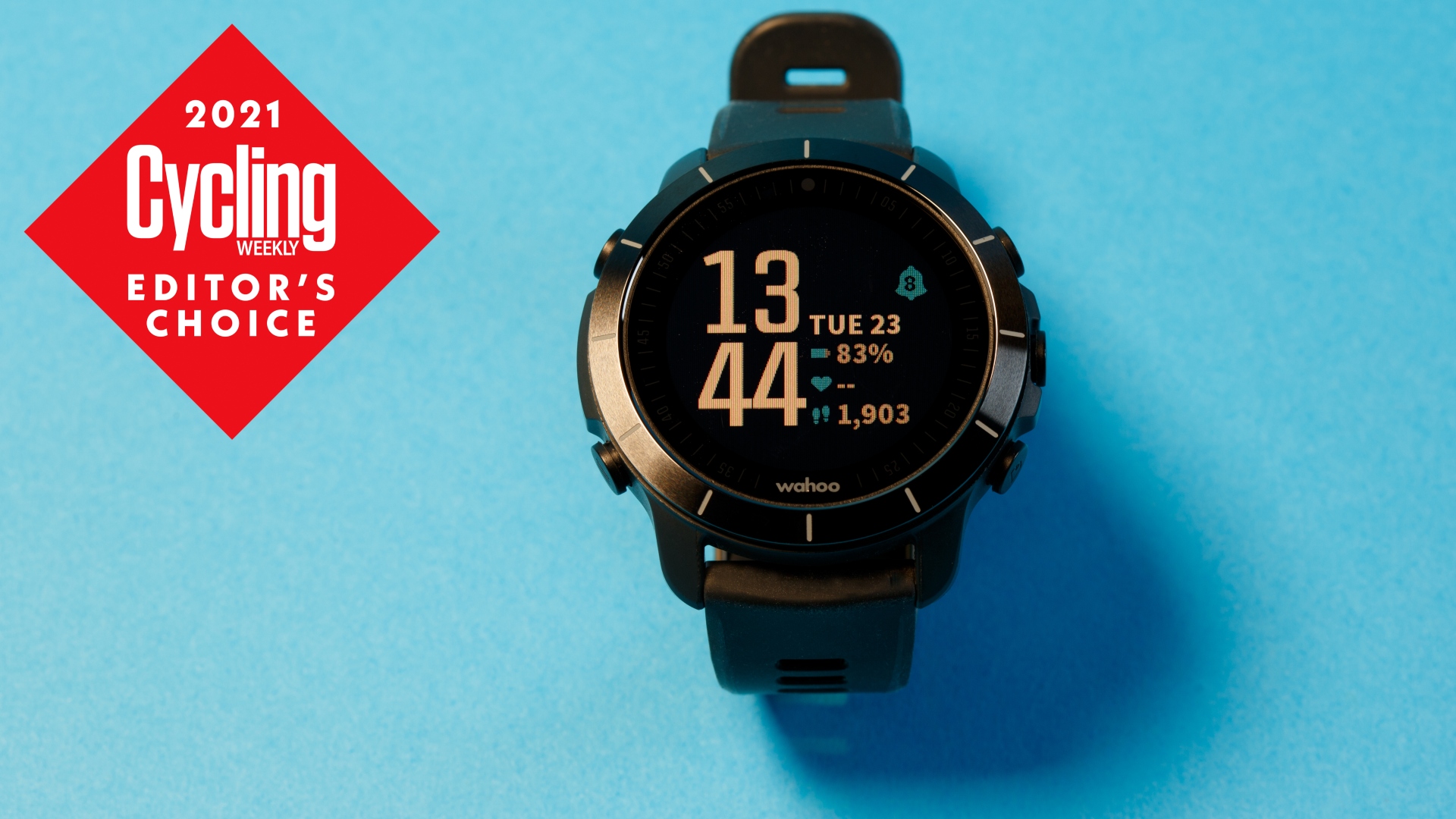
Specifications
Reasons to buy
Reasons to avoid
The Wahoo Elemnt Rival shares the same user-friendly, intuitive functionality as Wahoo’s excellent cycling computers and uses the same app.
Not only that, but compared to other smartwatches it is lightweight and comfortable. We found that the GPS was very accurate, battery life was incredible and the optical heart rate monitor could be the most reliable out there.
Wahoo calls it "radically simplified" – it doesn’t do navigation, sleep tracking or adaptive training guidance so you could say its functionality is limited compared to the more ‘wearable’ orientated watches, but Wahoo intends the Elemnt Rival to be a sports watch for more serious athletes who already know what they’re doing and where they’re going.
If you want a sports-focused watch with the trademark Wahoo clean design, reliable pairing and syncing, an intuitive app and exceptional battery life, the Elemnt Rival is it.
- Read our full Wahoo Elemnt Rival smartwatch review
Best cycling smartwatch for battery life
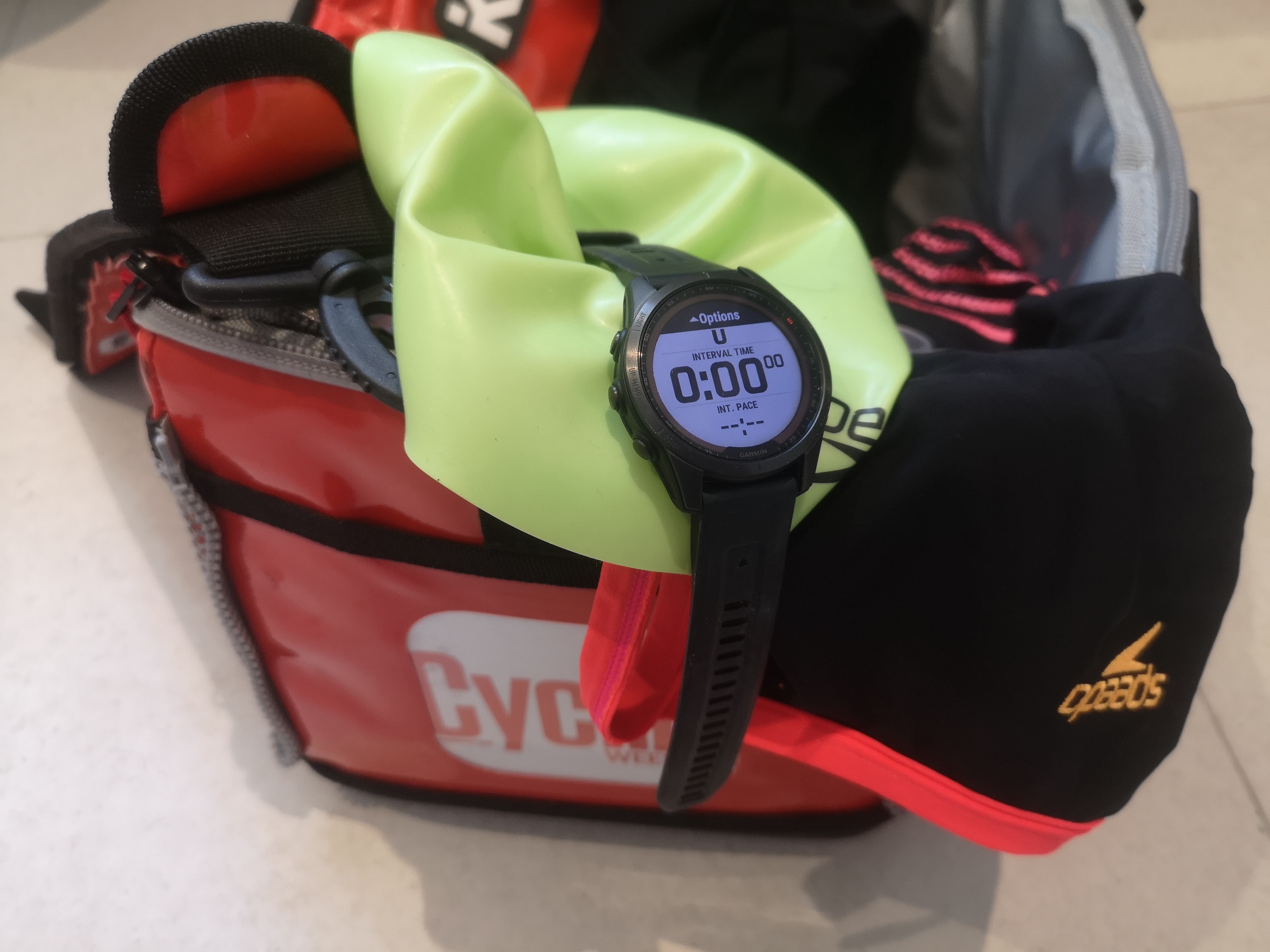
Specifications
Reasons to buy
Reasons to avoid
The Garmin Fenix 7 Sapphire Solar packs a lot of functionality into a watch-sized package. That includes not just GPS tracking, but Bluetooth, ANT+ and WiFi connectivity, optical heart rate measurement and pulse oximetry (measuring the oxygen level in your blood). That’s a lot of power-hungry functions to keep running – which will put a drain on your battery.
To combat this, Garmin has added a solar coating to the glass face of the Fenix 7 which turns the sun’s rays into a boost to the battery, offering up to 5 days of GPS tracking and 5 weeks in smartwatch mode. The Fenix 7 is available without solar charging too and in three different sizes, as well as with a variety of case and strap materials.
It does everything you might want and more which could be confusing, but once we'd zeroed in on what we wanted to track it was easy to use. Functionality includes basemaps, navigation and on-board music and there's a touchscreen interface alongside buttons, making it easy to use.
We liked that Garmin Connect app’s interface is nice to use and it too can be customized according to your sporting interests.
- Read our full Garmin Fenix 7 Sapphire Solar review
Best smartwatch with crossover sports functionality
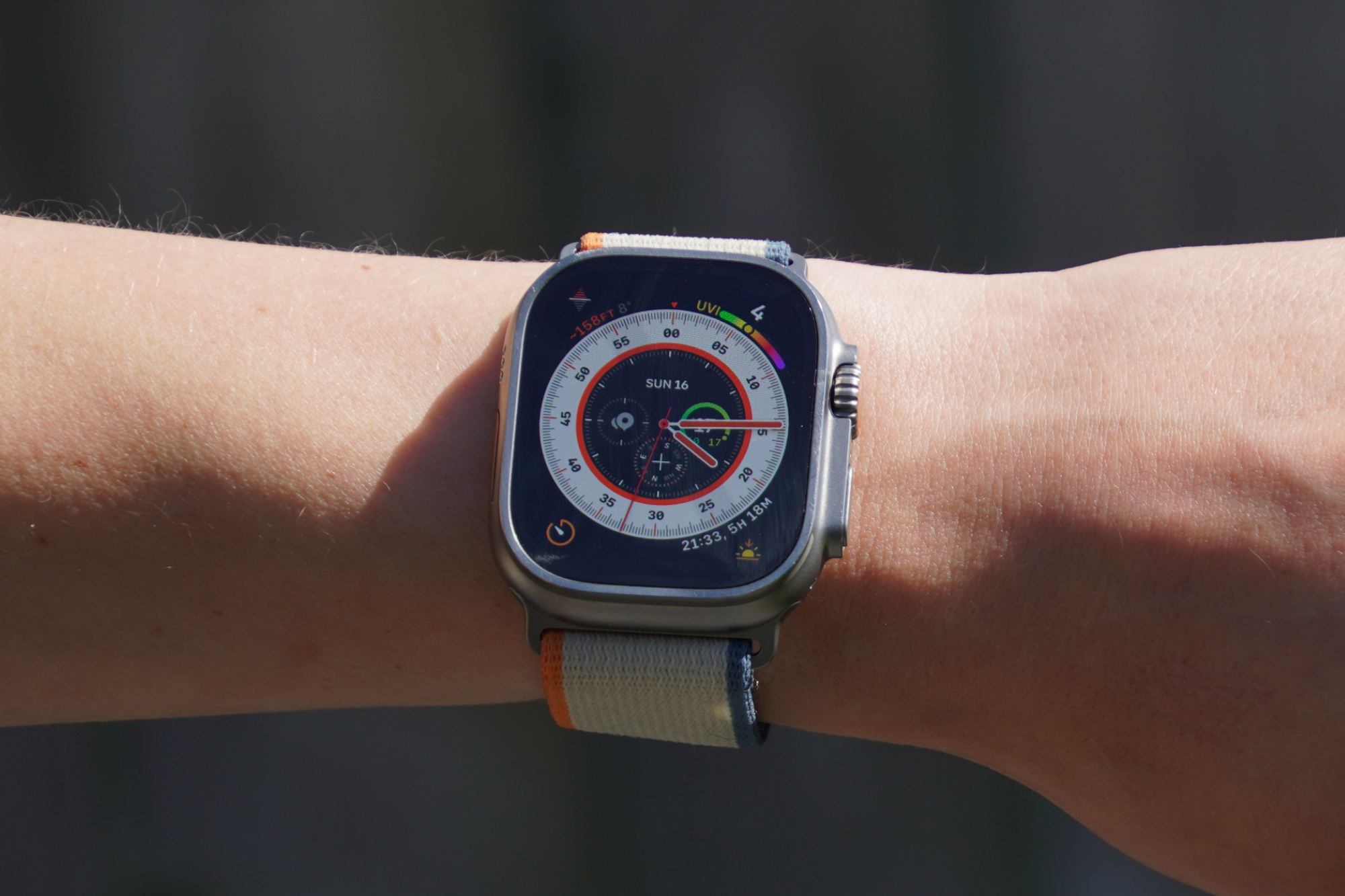
Specifications
Reasons to buy
Reasons to avoid
The updated Ultra 2, with a touchscreen and dials, offers plenty of functionality along with seamless integration with other Apple devices. If you’re an iPhone user you can even mirror the data screen of the Ultra 2 and use it as a cycling computer or if you just want to follow a workout on a larger screen - and while it doesn't have built-in maps you can download offline maps from your iPhone. A side note on the maps - we found the dial was really helpful when we needed to zoom in and out of a map and we’re pleased with the accuracy of the GPS.
We found that workouts were easy to start and follow on the Ultra 2. The settings were just as simple to adjust - we used the auto-pause when commuting to take into account the stops for traffic lights, but kept the clock running when we were out riding or during a multi-day bikepacking trip.
The Ultra 2 doesn’t come with any preloaded structured workouts but it’s easy to connect to third-party apps like TrainingPeaks. You can also load Strava to the watch although its routes and mapping aren’t currently supported on the watch. You can record heart rate and power directly onto the Ultra 2 and then follow your workouts with intervals at different intensity levels set by either heart rate or cycling zones. We checked the accuracy of the watch’s optical heart rate monitor by using our own Garmin HRM chest strap and were impressed with just how close the Ultra 2 got the readings of the Garmin.
Perhaps the biggest downside to the Ultra 2 is its lack of battery power when compared to its rivals - while many of them can deliver a week’s worth of usage on a charge, we found that the Apple watch needed more juice after just a day and half.
- Read our full Apple Watch Ultra 2 smartwatch review
Best cycling smartwatch for handsfree operation
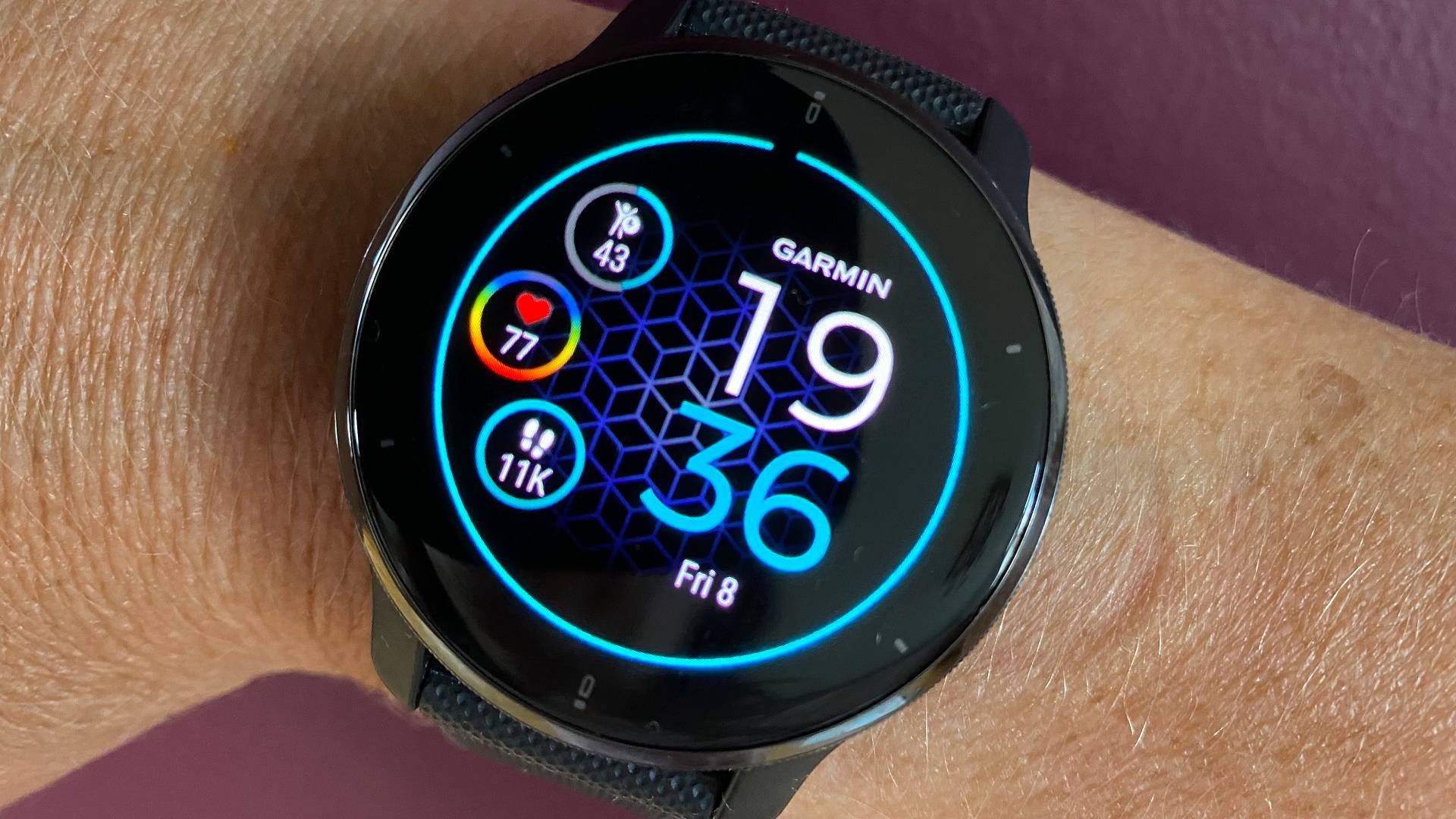
Specifications
Reasons to buy
Reasons to avoid
The Garmin Venu 2 Plus boasts a very bright Amoled display which outshines many smartwatches and cycling computers and can be set to be always on or to light up when you move your wrist to see the face. There are loads of different case and strap options.
Control is via three buttons and a touchscreen and the Venu 2 Plus is fast to charge. It has good battery life too when GPS recording and we got around 7 days between charges. You can also use voice commands, which are actioned via your smartphone app.
There's good functionality to record cycling, as well as other sports, and view metrics as you exercise. You can pair the Venu 2 Plus with cycling peripherals like a power meter, heart rate monitor for cycling or the Garmin Varia radar/light.
- Read our full Garmin Venu 2 Plus smartwatch review
Best for HRM accuracy
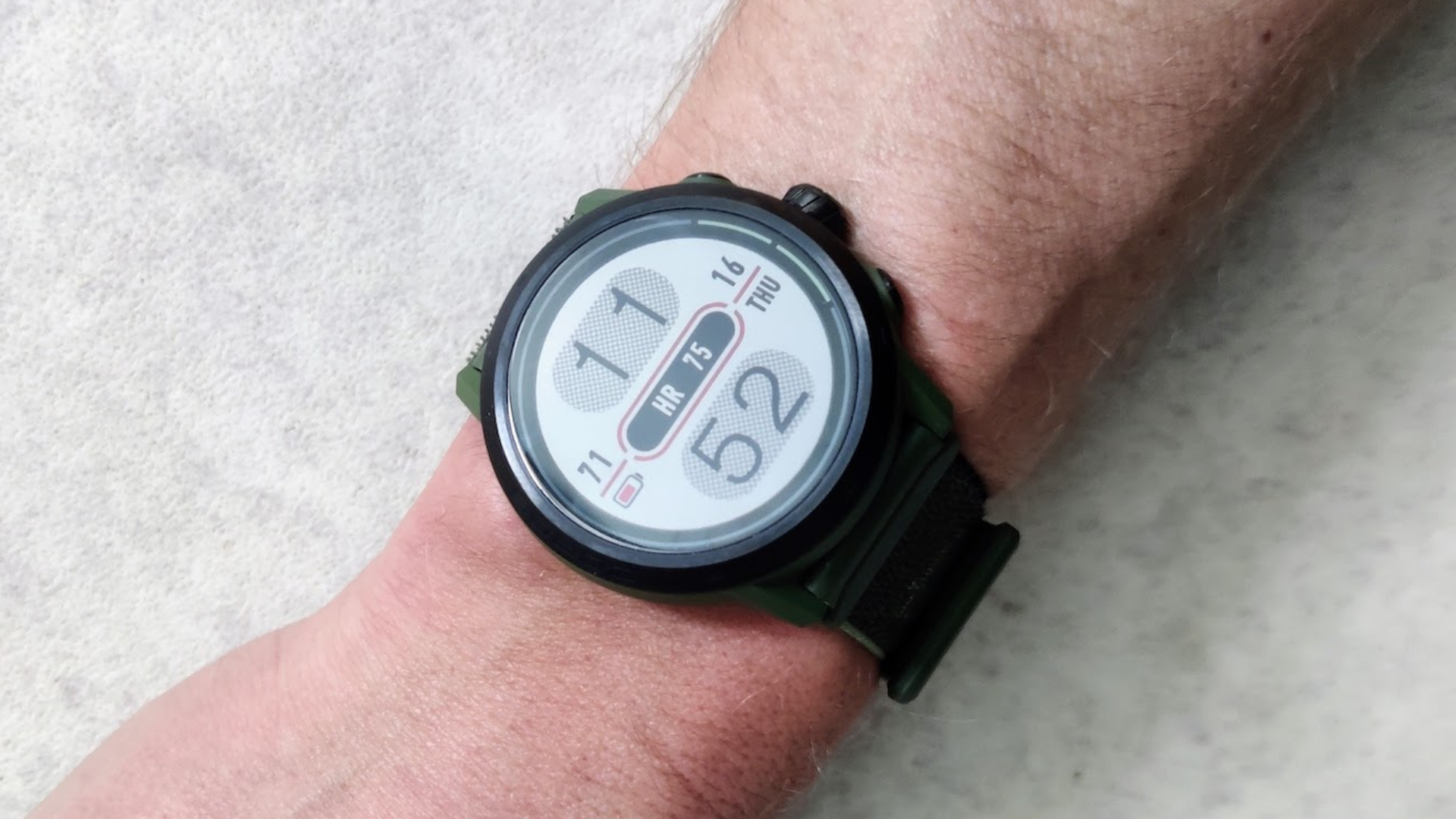
Specifications
Reasons to buy
Reasons to avoid
The Coros Apex 2 Pro smartwatch has a five LED heart rate measurement system, which we tested against a chest strap - it gave accurate heart rate measurement from the wrist. It's quick to set up and links easily to the companion app and Strava. There are a huge number of customisation options controlled via the app.
There are profiles for many different activities, not just cycling and running, and the Coros will track sleep and heart rate variability when worn. You can follow a GPX trace, but unlike some smartwatches, you don't get turn-by-turn directions.
Battery life is great - Coros claims 30 days per charge with 75 hours of GPS tracking, which we met or exceeded in our testing.
- Read more: Coros Apex 2 Pro smartwatch full review
- Read more: Garmin Forerunner 255 smartwatch full review
How we test
All the smartwatches featured in this guide have been worn, used and tested extensively by Cycling Weekly team and contributors for their accuracy in terms of data recording, connectivity, ease of use and comfort. With smartwatches now fulfilling so many varied functions, you might probably be wearing one for 24 hours a day, so that is how they were tested, with each watch put through its paces as an exercise computer and daily watch.
Doing this hands-on testing allows us to really delve into the functionality of each watch and test whether brand claims are true. Additionally, this insight enables us to provide you with better feedback and advice in guides like this.
All the data collected throughout our testing is cross-referenced with devices we are now familiar with or have experience with. For example, when testing a smartwatch's heart rate monitoring accuracy, we will always check this against a chest strap HRM.
Frequently asked questions about Smartwatches
If you're not sure what features are important in a smartwatch for cycling, our buyer's guide will help you to choose the functions that make for a great smartwatch for the cyclist.

What materials do smartwatches use?
Most sports activity trackers are designed rugged so that they will withstand knocks and shocks. They're usually waterproof enough for diving too.
More basic models will have a plastic case and strap, but spend more and you'll get a metal bezel or casing, might get a tougher glass face and may be able to purchase a metal strap too.
If your primary goal is sports tracking beware of flashy features though. We've tested high-end smartwatches that are heavy and uncomfortable to wear, with sharp metal edges that dig into your wrist when holding the bars.
What features do smartwatches offer for cycling?
GPS tracking will be vital. More basic smartwatches may piggyback from a smartphone for the duration of your rides but now even Fitbit has built-in GPS in many of its fitness trackers.
Many multisport watches also come with barometers and altimeters. This is useful for accurate elevation profiles in recorded data.
Keep in mind though that more sensors mean a greater drain on battery life. They will need a bigger battery, leading to larger watches.
Even if you only use it for cycling, clearly a smartwatch needs to be water-resistant. As a starting point, we'd recommend an IP67 rating (IP is a rating of the watch's ingress protection – the higher the number, the better the protection).
Do I need a touchscreen?
Some smartwatches have a touchscreen interface, although most work with an array of buttons. Touchscreens can be very intuitive and easy to use off the bike, but when you're riding they can be awkward to operate, so having buttons as well is useful as a fallback.
The decision between touchscreen and buttons is more personal preference than anything else. Buttons can have a more tactile feel, are much easier to use when wearing gloves and guarantee impressions, whereas the quality of touchscreens, and their performance in wet weather, can vary from brand to brand.
On the other hand, touchscreen displays are often more aesthetically pleasing with less bezel and sometimes with smaller screens. Usually, a touchscreen smartwatch will offer buttons too. It may only allow you to use the buttons to control functions during exercise to prevent you from inadvertently stopping recording as you ride.
What battery life can I expect?
The best smartwatches include sophisticated battery management functionality, that lets you eke out plenty of battery life between charges.
You can expect around a week of battery life from the best smartwatches if you're just using them in smartwatch mode. That will drop significantly once you start to use the GPS chip to track your activities, but even so, they should rival the best bike computers.
If you're going long, a good cycling smartwatch should include the option to dial down battery-intensive functionality to add days to its runtime. That might include lowering the sensitivity or sample rate for GPS tracking or turning off some connectivity functions or in-built sensors, or just powering up less of the screen.
Garmin has added to battery life by including the option to choose solar charging in some of its smartwatches. We didn't find it added much to battery life in the Fenix 6, but battery life has been significantly extended in its replacement Fenix 7. The Garmin Enduro, also solar-charged, is claimed to run for up to a year between charges in its lowest power mode and 95 days with low-power GPS tracking.
When it does come time to recharge your smartwatch, most use a USB cable, although it might be one with a connector that's specific to your smartwatch.
What navigation features do smartwatches provide?
You can expect route planning and navigation in a smartwatch designed for sports. As a minimum look for a breadcrumb trail of a pre-planned route, but the more sophisticated will include a basemap too.
If you follow a pre-planned route, the best smartwatches will give you turn-by-turn instructions, just like a cycling computer. You may get in-ride rerouting, although you might need to carry your smartphone with you for this.
You may get many of the other features of the best cycling computers like back-to-start routing, hill climb profiles and weather alerts.
What connectivity features should I look for?
Before you buy, check the compatibility of your power meter or cadence sensors with a cycling smartwatch. Some watches don't pair with external sensors, particularly if they're aimed at general fitness as well as cycling.
The best smartwatches for cycling include BLE connectivity to let you link up to these devices. Often you'll get ANT+ connectivity too on devices specifically designed for cycling and multisport tracking.
Optical heart rate sensors work by lighting up your capillaries with an LED. As your blood pumps through, the density changes and the light reflects back differently. The watch then translates this into a beats-per-minute reading.
Although many smartwatches have wrist-based heart rate monitoring built-in, you may get a more accurate measurement if you wear a separate heart rate monitor strap, as movement and sweat at the wrist can affect how well the optical sensor works.
If you already have an HRM, check that the smartwatch will work with it, although most modern HRMs will broadcast both BLE and ANT+ signals.
What health tracking features should I look for in a smartwatch for cycling?
Nearly all smartwatches track the same metrics as basic fitness trackers do. That means step count, calorie burn and sleeping habits. That's usually integrated into an overview of your fitness and often includes tips and advice on how to improve.
Most of the latest smartwatches for cycling will record your heart rate continually while you wear them, giving you a day-to-day record of your resting heart rate. You can use this to see the trend in your fitness level, see if you're becoming fatigued, overtrained, or ill – and if you're about to hit peak fitness. You may get a prompt from the smartwatch to rest up or do specific drills to help you hit your goals.
Some smartwatches include blood oxygen monitoring. It's useful for tracking adaptation to altitude, but is quite power-hungry and only works when you're not moving, so may only operate when you're asleep.
Another function that some smartwatches offer is electrocardiogram traces. You have to initiate these yourself; it's another function that may give you limited useful data.
Most smartwatches will include Bluetooth and/or WiFi connectivity and use this to link to a smartphone app and/or a computer app to upload activities wirelessly. The app will provide more health and exercise analysis and history and you'll get connectivity to Strava and training apps like TrainingPeaks.
What are the drawbacks of using a smartwatch for cycling?
Screen size is obviously limited in a smartwatch compared to the best bike computers. Some models with larger screens can get a bit chunky, so look out for a size that will feel comfortable to wear, particularly if you're planning to wear your smartwatch day and night for sleep tracking.
Just like with a bike computer, you can usually change what data is displayed on your screen, although you may have to limit how many fields are shown to fewer than with a cycling GPS. The small screen is more limiting with graphic content like routes and maps, where it may be difficult to zoom out or track around enough to see the bigger picture.
On the other hand, you can often set the smartwatch to vibrate to alert you to turns when navigating or to incoming messages from your smartphone.
Attached to your wrist, you may find it's harder to keep an eye on the metrics displayed on a smartwatch than on a cycling computer, which has its screen facing you. Some brands offer bar mounts to let you attach your watch to your bike for better visibility.
What triathlon-specific features do smartwatches provide?
If your exercise targets include triathlons, many smartwatches will include the ability to transition between activities. The Wahoo Elemnt Rival majors on this, with seamless transitions, but other brands like Garmin include this functionality as well.
Both these brands include functionality for mirroring so that your cycling computer can display data collected during your swim and you get a holistic view of your performance.
The latest race content, interviews, features, reviews and expert buying guides, direct to your inbox!
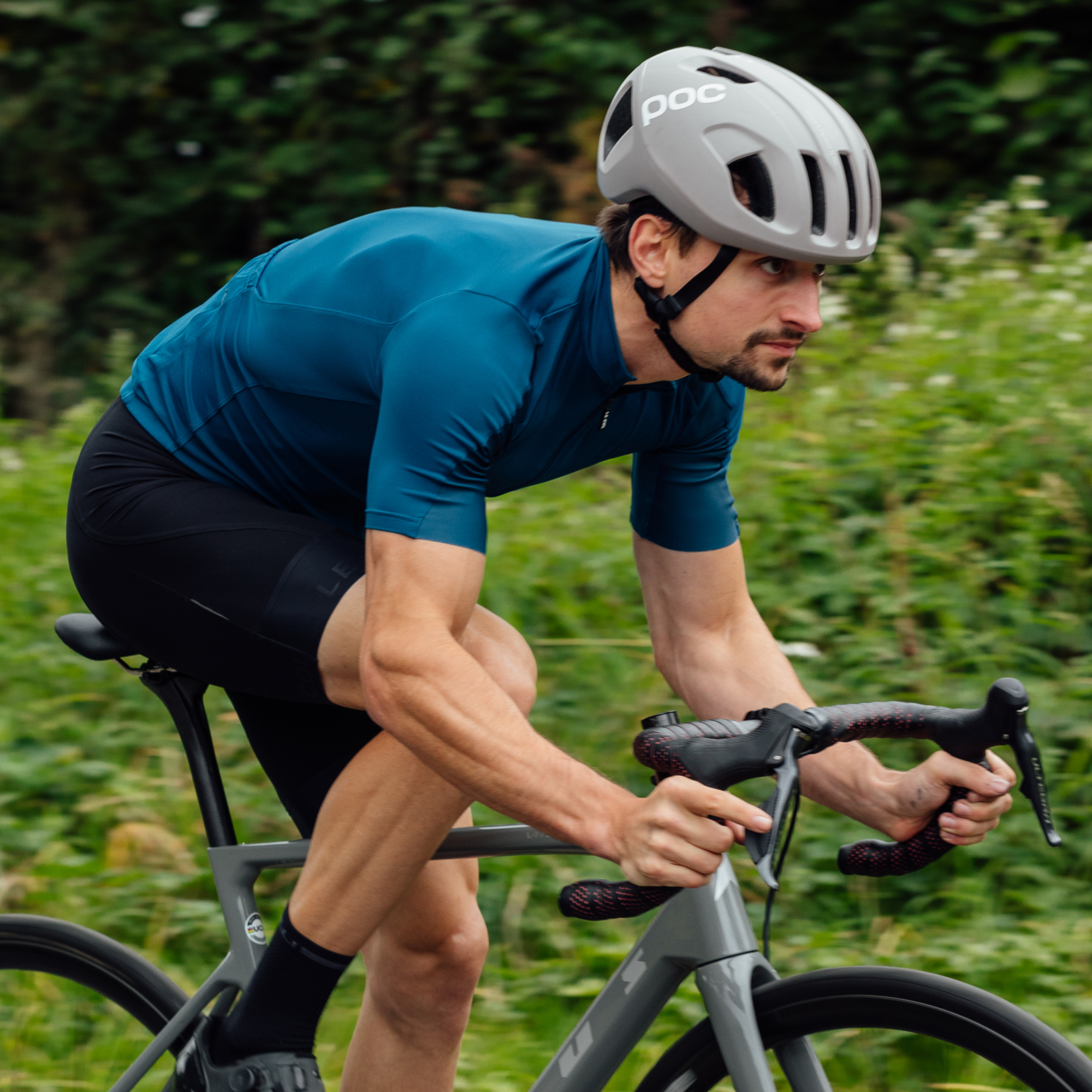
After winning the 2019 National Single-Speed Cross-Country Mountain Biking Championships and claiming the plushie unicorn (true story), Stefan swapped the flat-bars for drop-bars and has never looked back.
Since then, he’s earnt his 2ⁿᵈ cat racing licence in his first season racing as a third, completed the South Downs Double in under 20 hours and Everested in under 12.
But his favourite rides are multiday bikepacking trips, with all the huge amount of cycling tech and long days spent exploring new roads and trails - as well as histories and cultures. Most recently, he’s spent two weeks riding from Budapest into the mountains of Slovakia.
Height: 177cm
Weight: 67–69kg
- Sonny EvansWriter